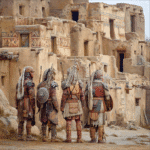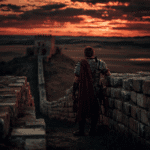
The Mayan civilization stands as one of the most fascinating and enigmatic cultures of the ancient world. Flourishing in the jungles of Mesoamerica, the Maya developed remarkable achievements in art, architecture, mathematics, astronomy, and writing – leaving behind majestic ruins and complex glyphs that continue to intrigue and mystify modern scholars. Their story is one of spectacular ascent, resilient adaptation, and sudden decline.

Origins and Early Development
The Maya emerged from the mist of prehistory between 2000–1500BCE, their roots stretching back to hunter-gatherer communities around 7000. By 1500BCE, they had formed settled villages, cultivating staple crops such as corn (maize), beans, squash, and chili peppers. This agricultural revolution set the foundation for burgeoning society and complex communal life, allowing population centers to thrive.
During the Preclassic Period (c.2000BCE–250CE), the Maya began constructing ceremonial centers and pyramids, laying the groundwork for what would become one of the most impressive city-building traditions in the ancient world. Cities such as Mirador – one of the greatest pre-Spanish cities – emerged in northern Guatemala, showcasing their prowess in architecture and organization.
The Rise of City-States
Around 250, the onset of the Classic Period saw the Maya civilization reach new heights. More than 40 cities arose throughout present-day southern Mexico, Guatemala, Belize, Honduras, and El Salvador, each with populations between 5,000 and 50,000. At its peak, the estimated population might have reached up to 10 million people.
Among the prominent cities were Tikal, Calakmul, Palenque, Bonampak, Copán, Uaxactún, Dos Pilas, and Chichén Itzá. These urban centers boasted towering pyramids, elegant palaces, sprawling plazas, and ball courts, reflecting the sophistication and grandeur of Maya civilization. The Maya quarried vast quantities of limestone for their construction needs, using chert tools to cut and shape the stones, while their buildings often displayed intricate stone carvings and decorative stucco façades.

Government and Society
Unlike the centralized empires of Egypt or Rome, the Maya were organized into independent city-states, each ruled by a king or high noble. These leaders held both secular and spiritual authority, maintaining elaborate courts and overseeing administration, warfare, and religious ceremonies.
Society was stratified, with nobles, priests, artisans, merchants, and farmers all contributing to the vibrant urban tapestry. Skilled artisans produced magnificent pottery, intricate jewelry, and evocative sculptures, embodying the Maya’s cultural richness.
Writing, Mathematics, and Astronomical Genius
One of the Maya’s defining achievements was the development of hieroglyphic writing – the only fully developed written language in the ancient Americas prior to Columbus’s arrival. The Maya wrote on stone monuments, ceramics, and codices made from fig-bark paper, recording historical events, religious rituals, and astronomical observations.
Their mathematical system was extraordinary, incorporating the concept of zero centuries before its emergence in the Old World. Using dots and bars as numerical symbols, the Maya performed calculations and maintained intricate calendar systems.
The Maya Calendar
The Maya devised three interlocking calendar systems: the Tzolk’in (divine calendar), the Haab’ (solar calendar), and the Long Count. The Tzolk’in consisted of 260 days, likely connected to agricultural cycles and ceremonial life. The Haab’ was a 365-day solar calendar, closely paralleling the modern Gregorian year. The Long Count allowed the Maya to record historical dates across periods spanning thousands of years.
Their expertise in astronomy was legendary: Maya priests observed the movements of the sun, moon, planets, and stars from observatories such as those found in Uxmal and Chichén Itzá, predicting celestial events with striking accuracy. The orientation of their structures often mirrored astronomical phenomena, weaving cosmic order into the very fabric of daily life.
Maya Achievements in Science, Engineering, and Art
Architecture and Urban Planning
Some of the Maya’s most enduring achievements lie in the breathtaking architecture they left behind. Their cities featured majestic stepped pyramids (the Temple of the Inscriptions at Palenque, El Castillo at Chichén Itzá), grand plazas, and ball courts used for ritualistic games. Residences of nobility were adorned with elaborate stone carvings and painted murals depicting mythological tales and historical triumphs.

Maya engineers built networks of straight roads (sacbeob), sophisticated irrigation canals, and immense underground water storage systems to survive the region’s dry seasons.
Art and Craftsmanship
Art flourished in Maya society, with sculptors, painters, and weavers producing masterpieces in clay, stone, jade, bone, and textiles. Their pottery was renowned for its polychrome decoration, while their stelae – tall, inscribed stone slabs – served as historical chronicles.
Inventions and Innovations
Beyond their mathematical and astronomical legacy, the Maya pioneered numerous innovations:
- Rubber processing: They created elastic materials from native rubber tree latex, preceding vulcanization by centuries.
- Paper production: Maya scribes used the inner bark of fig trees to craft codices, preserving knowledge for future generations.
- Water repositories: Ingenious underground reservoirs stored water during droughts, sustaining urban populations.
- Ball game equipment: The Maya invented equipment from rubber for their sacred ball games, a precursor to modern-day sports technology.
Religion, Myth, and Cosmos
Religion permeated every aspect of Maya life. The Maya pantheon included powerful deities such as Itzamná (creator god), Kʼawiil (god of lightning), Chac (rain god), and Ix Chel (moon goddess). Rituals involving elaborate costumes, music, chanting, and bloodletting were performed to appease the gods and ensure cosmic harmony.
Burials of kings and nobles were accompanied by lavish grave goods and funerary inscriptions, reflecting beliefs in an afterlife and cycles of reincarnation. Mayan creation myths speak of dramatic events: worlds destroyed and recreated, cosmic monsters battled, and humans formed from maize by the gods.
The Mystery of Collapse
The Maya Classic era, with its flourishing city-states and intellectual achievements, abruptly declined around 900. Most southern lowland cities – Tikal, Copán, and others – were abandoned, left to succumb to the inexorable advance of jungle vegetation. What caused this sudden and widespread collapse remains hotly debated among scholars.
Theories Behind the Decline
More than 80 theories or variations have emerged to explain the Maya collapse – a testament to its complexity and enduring mystery:
- Drought and climate change: Scientific studies have uncovered strong evidence for prolonged, severe droughts within the Maya heartland during the 9th century. These “megadroughts” would have devastated agricultural production, provoked famine, and undermined social stability.
- Warfare: Intensified warfare between rival city-states, territorial conquests, and sacrificial violence destabilized previously resilient polities. Fortifications, weapons caches, and the presence of foreign influences hint at a period of heightened conflict.
- Resource depletion: Overpopulation taxed the land, leading to deforestation, soil erosion, and a collapse in agricultural productivity.
- Trade disruptions: Shifts or collapses in trade routes, possibly triggered by political unrest or environmental factors, impaired economic lifelines and precipitated urban decline.
- Disease and famine: Epidemics, crop failures, and famine have also been suggested as contributing causes.
Most scholars now agree that the collapse was not uniform nor caused by a single factor, but rather a confluence of environmental, social, and political stresses.

Resilience and Continuity
Despite the dramatic end of the Classic city-states, Maya civilization did not vanish. The Postclassic Period (900–1519CE) saw new urban centers such as Chichén Itzá, Mayapán, and Uxmal rise in the Yucatán Peninsula. These cities persisted for centuries, adapting to changing conditions and forming new alliances and kingdoms.
The arrival of the Spanish in the early 16th century marked a new era of upheaval. Despite conquest, forced conversion, and oppression, Maya communities retained much of their ancestral culture, language, and traditions. Today, millions of Maya descendants inhabit southern Mexico, Guatemala, Belize, and Honduras, preserving ancient crafts, rituals, and traditional knowledge.
Rediscovery and Modern Relevance
The Maya world remained hidden beneath dense forest until explorers, archaeologists, and indigenous guides began to rediscover its wonders in the 19th and 20th centuries. Excavations in Tikal, Chichén Itzá, and Palenque revealed grand temples, lost cities, and thousands of hieroglyphic inscriptions.
Recent advances in technology, such as LiDAR mapping, have uncovered vast settlements, causeways, and fortifications, suggesting that the Maya world was even larger and more complex than previously imagined.
Modern Maya communities are active participants in the ongoing rediscovery of their civilization, reclaiming ancestral legacies and contributing new insights to academic fields. Maya tradition, language, and cosmology remain vibrant, shaping local and global cultural dialogues.
Conclusion
The story of the Maya civilization is a testament to human ingenuity, resilience, and adaptability in the face of adversity. From humble agricultural beginnings to the grandeur of city-states, the Maya cultivated a culture of innovation, artistry, and cosmic wonder unmatched in the ancient Americas. They bequeathed a rich legacy, etched in stone, measured in stars, counted in cycles, that continues to inspire and challenge humanity’s understanding of itself.
As we walk among the temples of Tikal, ascend the steps of Chichén Itzá, or decode the elegant glyphs of a long-forgotten scribe, we bear witness to the enduring mystery and profound beauty of the Maya – a civilization that, though once thought lost, persists in spirit and in the living memory of its people.





